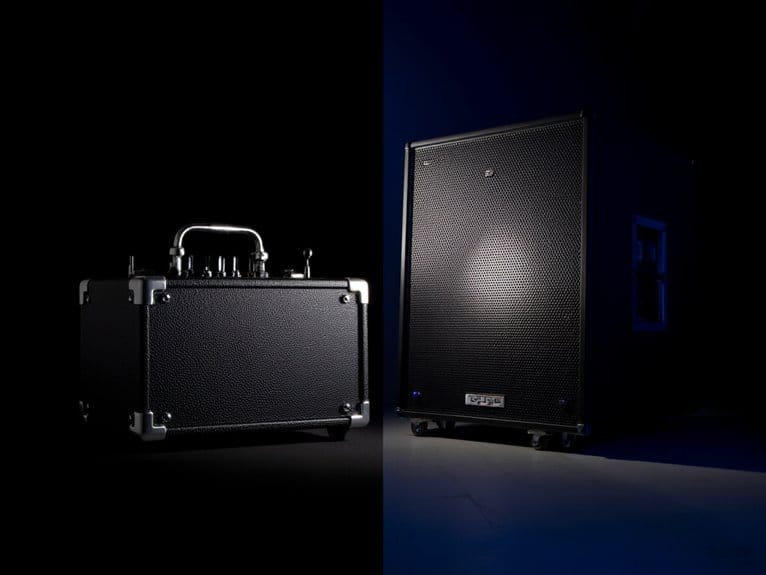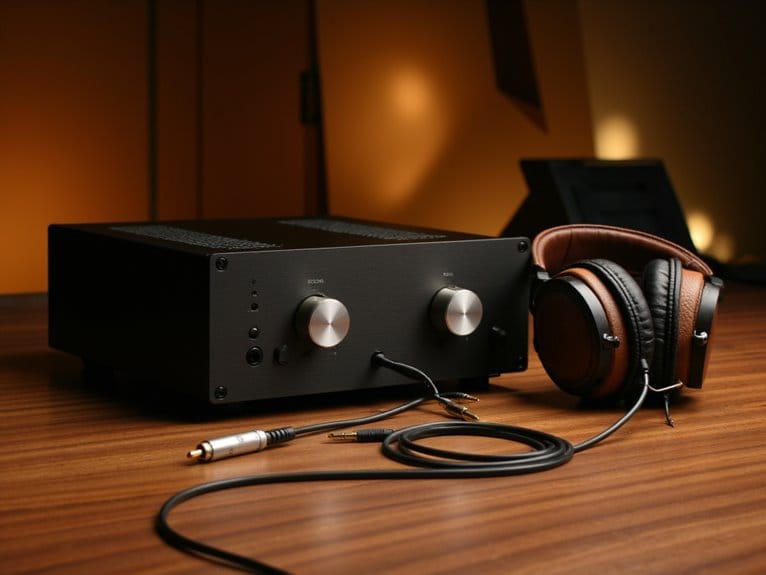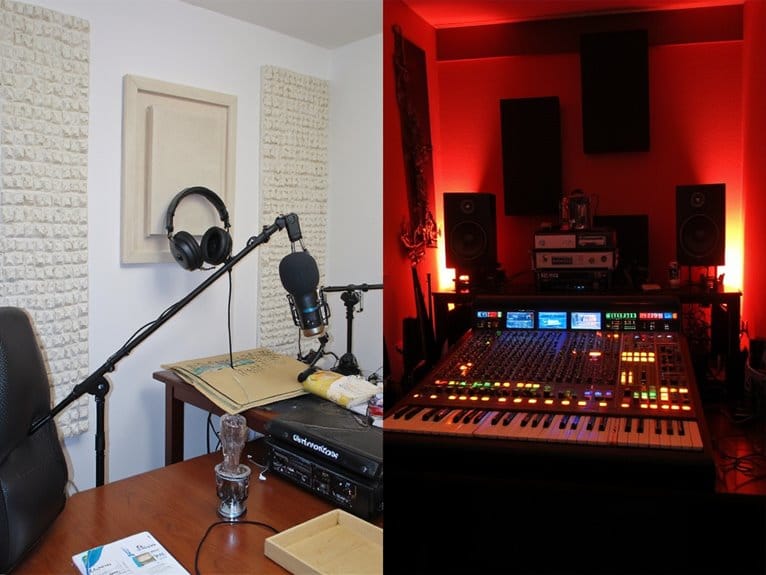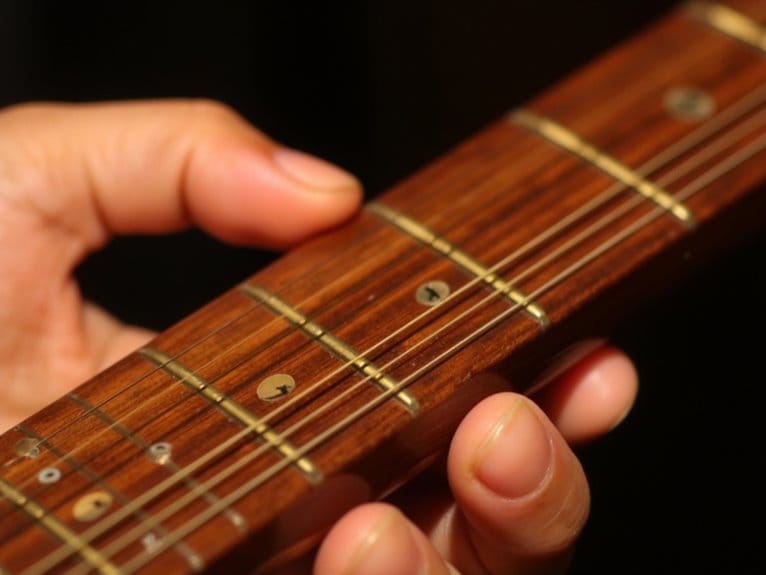Bass Amp vs. PA Systems: Modern Performance Solutions
You’ll need at least 200W for small venues when choosing dedicated bass amps, which deliver that punchy, chest-felt resonance and tonal warmth that PA systems struggle to replicate without extensive EQ work. While modern bass amps now standard at 300+ watts offer superior low-frequency fundamentals through specialized speaker configurations, PA systems provide better audience coverage in larger venues and increasingly integrate with bass amps serving as stage monitors. The emerging hybrid approaches and AI-assisted processing innovations reveal deeper strategic considerations for your specific performance needs.
We are supported by our audience. When you purchase through links on our site, we may earn an affiliate commission, at no extra cost for you. Learn more.
Notable Insights
- Bass amps deliver warm, punchy tones with natural low-frequency resonance that PA systems require extensive EQ to replicate.
- Modern bass amps provide 300+ watts as standard, with 500W+ recommended for larger venues versus PA flexibility.
- Small venues benefit from direct bass amp reinforcement while large venues favor powerful PA systems for audience coverage.
- Bass amps increasingly serve as stage monitors while PA systems handle primary sound reinforcement in hybrid setups.
- AI-assisted processing and wireless app control are revolutionizing both bass amps and PA systems for enhanced performance reliability.
Sound Quality and Tonal Performance Differences
When I first started comparing bass amps to PA systems, the most striking difference wasn’t volume or power-it was how fundamentally different they approach reproducing low frequencies.
Bass amps deliver exceptional sound clarity through speakers specifically engineered to handle sub-bass frequencies, creating that distinctive punch and resonance you’ll feel in your chest. The tonal warmth comes from dedicated circuitry that emphasizes low and mid frequencies while naturally rolling off harsh highs, giving you that authentic bass character.
PA systems, though they’ll project your sound farther and more evenly across a venue, often require extensive EQ adjustments to approximate what bass amps do naturally, and they can’t quite replicate that immediate, focused response. Modern lightweight bass amps achieve this balanced frequency response while maintaining portability, with many models weighing under 20 pounds yet delivering the punchy lows and crisp highs that PA systems struggle to match without additional processing. Higher wattage amplifiers produce cleaner, more defined bass tones that cut through full band mixes with the clarity that PA systems often lose when handling complex low-frequency content. For bassists seeking a versatile setup, pairing a lightweight amp with the best short scale bass guitars can enhance playability and comfort, especially for those who prefer a smaller instrument. These shorter scale options offer a rich tonal quality and easy navigation across the fretboard, making them a favorite for players of all styles. In combination with the right amplifier, they create a powerful and cohesive sound that stands out in any live performance.
Technical Specifications and Setup Requirements
Power specifications reveal the most practical differences between bass amps and PA systems, and I’ve learned that understanding these numbers can save you from costly mistakes or underwhelming performances. Bass amp amplification technology typically ranges from 20 watts for practice to over 1000 watts for professional stages, with solid-state models requiring roughly five times the wattage of valve amps for equivalent perceived volume.
Understanding power specifications between bass amps and PA systems prevents costly mistakes and ensures your performance delivers the volume you need.
Key technical considerations include:
- Power ratings – 200W minimum for small gigs, 500W+ for larger venues
- Speaker configurations – 4Ω impedance matching with 10″, 12″, or 15″ drivers optimized for 31-41Hz fundamentals
- Environmental specs – Operating ranges up to 40°C and 2000 meters altitude
PA systems offer modular flexibility but require separate components, while bass amps provide integrated solutions with built-in preamps optimized specifically for low-frequency reproduction. Modern bass heads utilize Speakon connectors to prevent signal dropouts during high-power applications, ensuring reliable connection integrity throughout demanding performances.
Venue Size and Application Considerations
Choosing between bass amps and PA systems becomes dramatically more complex once you factor in venue size, and I’ve discovered that what works perfectly in your garage rehearsal space can leave you either overwhelmed or completely inaudible when you hit different performance environments. Additionally, understanding how to utilize direct recording techniques for bass can vastly improve your sound clarity and adaptability in various settings. Many musicians find that blending the right amp settings with these techniques allows for a more versatile sound that translates well on stage. Ultimately, investing time in rehearsing with both setups will provide valuable insights and help you make an informed decision based on your specific needs and performance contexts.
Small venue strategies typically require your bass amp to handle primary sound reinforcement since most intimate clubs lack dedicated PA support, meaning you’ll need sufficient wattage to fill the room directly.
Large venue dynamics flip this equation entirely, where powerful PA systems dominate audience coverage and your amp becomes primarily a stage monitor.
I’ve learned that acoustic challenges, reverberation times, and speaker dispersion patterns all influence whether you’ll rely on direct amplification or embrace the hybrid approach of combining DI output with modest on-stage monitoring.
Equipment Evolution and Future Trends
While I’ve witnessed countless gear innovations over my years performing, the rapid evolution of bass amplification technology has fundamentally transformed how we approach live sound reinforcement. Modern bass amps now deliver 300+ watts as standard rather than luxury.
These design innovations emphasize seamless PA integration through enhanced DI outputs and onboard DSP processing, while portability advancements have reduced weight without sacrificing power output.
The convergence toward unified systems reveals three key developments:
- All-in-one solutions combining amp and PA functionality for streamlined setups
- AI-assisted processing enabling automatic feedback management and adaptive tone control
- Wireless connectivity facilitating app-based control and cloud-stored presets
You’ll find bass amps increasingly serving as stage monitors while PA systems handle primary reinforcement, though dedicated amps retain their distinct tonal characteristics that many bassists still prefer.
On a final note
You’ll find that choosing between bass amps and PA systems ultimately depends on your specific performance needs, venue requirements, and budget constraints. While traditional bass amps offer that familiar low-end punch and straightforward setup, modern PA systems provide greater versatility and scalability for diverse musical situations. I’ve noticed that many bassists today are successfully hybrid approaches, combining both technologies to maximize their sonic flexibility and adapt to various performance environments seamlessly.






